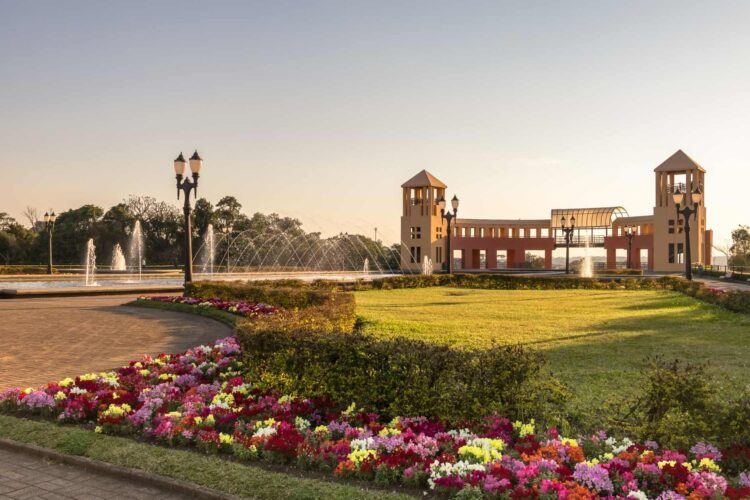
When we think of the Gulf Cooperation Council (GCC) nations—Bahrain, Kuwait, Oman, Qatar, Saudi Arabia, and the United Arab Emirates—we often envision sleek skyscrapers, ultra-modern cities, and futuristic development. But beneath the glittering skyline lies a rich and ancient history that stretches back thousands of years.
The GCC is home to a diverse cultural heritage, shaped by centuries of trade, exploration, Islamic tradition, and Bedouin culture. From UNESCO World Heritage Sites to ancient forts and archaeological wonders, the region is dotted with incredible places that offer a glimpse into the Arabian Peninsula’s storied past.
Here are some must-visit heritage sites across the GCC that will transport you back in time.
🏛️ 1. Al Zubarah Fort – Qatar
A UNESCO World Heritage Site, Al Zubarah Fort is one of the best-preserved examples of an 18th-century merchant town in the Gulf. Once a thriving center of trade and pearl diving, this coastal town now offers insight into Qatar’s pre-oil era economy and urban life.
-
What to see: Fortified walls, excavation sites, and the traditional Qatari architectural style.
-
Location: Northwest coast of Qatar.
🏯 2. Diriyah – Saudi Arabia
Often called the birthplace of the Saudi state, Diriyah is a historic town that served as the original home of the Saudi royal family and the first capital of the Saudi dynasty. The At-Turaif district, a UNESCO site, is currently being restored and transformed into a cultural and tourism hub.
-
What to see: Mud-brick palaces, historic mosques, and a deep dive into the origins of modern Saudi Arabia.
-
Location: On the outskirts of Riyadh.
🏰 3. Bahla Fort – Oman
Standing guard at the edge of the desert, Bahla Fort is one of Oman’s most iconic and mysterious heritage sites. Dating back to the 13th century, this UNESCO-listed fort reflects Oman’s defensive architecture and the power of the Banu Nebhan tribe.
-
What to see: Massive walls, intricate towers, and nearby pottery workshops in Bahla town.
-
Location: Al Dakhiliyah region, northern Oman.
🕌 4. Al Fahidi Historical District – UAE (Dubai)
Before Dubai became a global metropolis, it was a humble trading post. The Al Fahidi Historical District offers a rare look at the city’s past through its traditional wind towers, narrow lanes, and coral-stone houses.
-
What to see: Dubai Museum at Al Fahidi Fort, art galleries, and the Sheikh Mohammed Centre for Cultural Understanding.
-
Location: Bur Dubai, along Dubai Creek.
🏛️ 5. Failaka Island – Kuwait
Just off the coast of Kuwait City, Failaka Island is an archaeological treasure trove. Inhabited since the Bronze Age, it bears the marks of various civilizations—from the Mesopotamians and Greeks to early Islamic settlers.
-
What to see: Ruins of Greek temples, traditional Kuwaiti village remains, and war memorials from the Gulf War.
-
Location: Accessible by boat from Kuwait City.
🏯 6. Qal’at al-Bahrain – Bahrain
Known as the Bahrain Fort, this UNESCO World Heritage Site was once the capital of the Dilmun civilization, one of the oldest trading hubs in the ancient world. Layer upon layer of history reveals itself through archaeological digs spanning over 4,000 years.
-
What to see: Fort ruins, museum exhibits, and panoramic views over the Gulf.
-
Location: Just west of Manama, the capital.
🕌 7. Jibreen Castle – Oman
Jibreen Castle is not just a fortress—it’s a work of art. Built in the 17th century, the castle showcases elaborate wooden ceilings, Islamic calligraphy, and stunning architecture that reflect Oman’s scholarly and cultural legacy.
-
What to see: The “Sun and Moon Room,” secret passageways, and panoramic views from the rooftop.
-
Location: Near Bahla, in central Oman.
🏜️ 8. Liwa Oasis – UAE (Abu Dhabi)
Located on the edge of the Rub’ al Khali (Empty Quarter), Liwa is a historic date-farming region that played a vital role in Emirati heritage. It was the ancestral home of the ruling Al Nahyan family and remains a cultural touchstone today.
-
What to see: Traditional forts, date farms, and camel festivals.
-
Location: South of Abu Dhabi, near the Saudi border.
🐪 9. Souq Waqif – Qatar
While not ancient, Souq Waqif captures the spirit of old-world commerce and Qatari culture. The bustling market was historically a place where Bedouins traded livestock, spices, and textiles—and today, it retains that traditional charm.
-
What to see: Spices, traditional garments, falcons, and regional food in a vibrant open-air setting.
-
Location: Doha city center.
Final Thoughts
The GCC’s rapid modernization often overshadows its deep-rooted history, but for those willing to look beyond the glass towers and luxury malls, a rich cultural heritage awaits. These heritage sites serve not only as reminders of the region’s past but as living stories that continue to shape its identity today.
So whether you’re a history buff, culture enthusiast, or a curious traveler, exploring the heritage sites of the GCC will give you a profound appreciation for the people, traditions, and civilizations that built this dynamic region.
Read more on Travels On Click:
Why the GCC is Attracting Global Conferences and Events in 2024
Fujairah’s Coastal Charms: Beaches, Forts, and Scuba Diving
Qatar’s Futuristic Doha: Skyscrapers, Museums, and the Pearl

